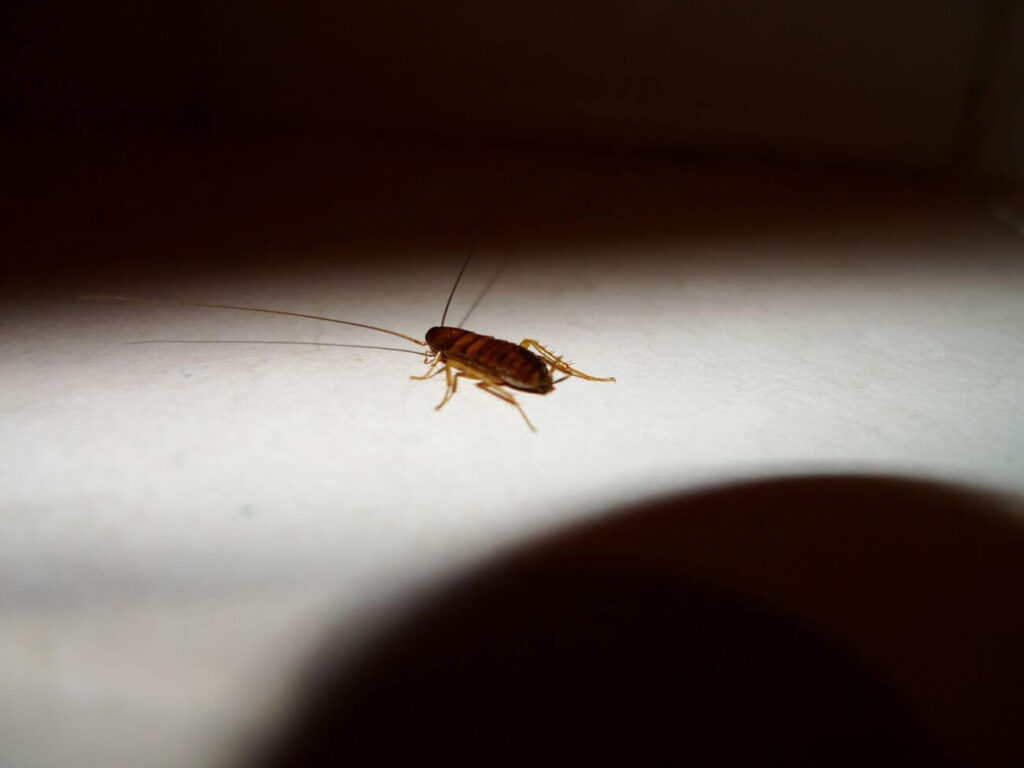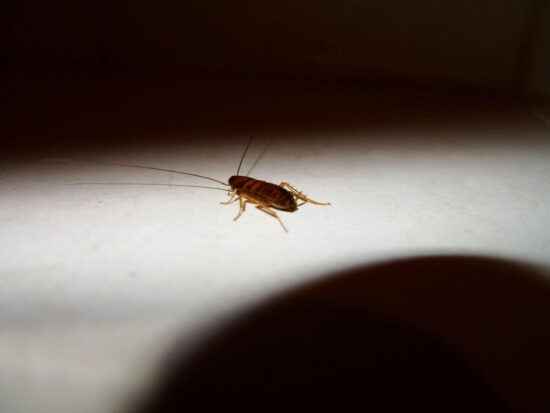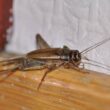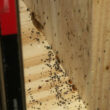Nobody wants to see a cockroach in their home, but spotting a baby cockroach can be even more alarming. These tiny creatures might look harmless, but they’re actually a big red flag that signals a much larger problem hiding in your house.
Baby cockroaches, which scientists call nymphs, are basically mini versions of adult roaches. The scary part? If you see one baby cockroach, there are probably dozens more hiding nearby. A single female American cockroach can produce about 150 baby roaches in her lifetime, while German cockroaches can create thousands per year.
The good news is that catching baby cockroaches early gives you the best chance to stop an infestation before it gets out of control. This guide will teach you exactly what to look for and give you 10 proven ways to get rid of these unwanted guests for good.
What Do Baby Cockroaches Look Like?
Understanding how to identify a baby cockroach is the first step in protecting your home from a full-blown infestation.
Size and General Appearance
Baby cockroaches look like tiny copies of their parents, but there are some key differences that make them easier to spot. Most nymphs measure between 1/8 to 1/4 inches long, depending on their age and what type they are.
Here’s something interesting: when baby cockroaches first hatch from their eggs, they’re bright white in color. Within just a few hours, they start to darken as their bodies harden. This white stage only lasts briefly, so most people never see it.
The easiest way to tell a baby cockroach from an adult is simple: look for wings. Nymphs don’t have fully developed wings yet. Instead, they have flat, oval-shaped bodies with six spiny legs and long, thin antennae that help them navigate around your home.

Different Types of Baby Cockroaches
Not all baby cockroaches look the same. The three most common types found in homes each have their own unique features.
- Starts killing roaches within hours and eliminates nests
- Lasts up to 12 months with child-resistant bait stations
- Easy to use, no mess or strong odors
- Targets roaches you see and the hidden ones too
German Cockroach Babies
German cockroach nymphs are very dark brown to almost black when they first hatch. They have two dark parallel bands running behind their heads, which is their most notable identifying feature. These nymphs start at about 1/8 inch long, making them some of the smallest you’ll encounter.
American Cockroach Babies
American cockroach nymphs start at about 1/4 inch long (roughly the size of a grain of rice). When they hatch, they begin pale white-grey but quickly develop a reddish-brown color. You can identify these baby cockroaches by their reddish-brown shells and the halo-shaped marking behind their heads.
Oriental Cockroach Babies
Oriental cockroach nymphs have dark, shiny bodies that are dark brown to black. These nymphs have horizontal light and dark bands running across their backs, which sets them apart from other species.
Important Facts About Baby Cockroaches
Learning about baby cockroach behavior and biology helps you understand why they’re such persistent pests and how to fight them effectively.
How They Grow and Develop
Cockroaches go through three main life stages: egg, nymph (baby), and adult. This process is called incomplete metamorphosis because they don’t have a cocoon stage like butterflies.
Baby cockroaches have to shed their skin multiple times as they grow bigger. Most species molt between 6 to 14 times before becoming adults. Each time they molt, they appear white again before darkening, which is why you might sometimes see pale nymphs in your home.
The time it takes for nymphs to become adults varies by species. German cockroach nymphs become adults in about 103 days, while American baby cockroaches take much longer at about 600 days.
What Baby Cockroaches Do
Baby cockroaches can’t fly because their wings aren’t fully developed yet. This means they have to crawl and jump to get around, often hiding in tight spaces like cracks and crevices where they feel safe.
Nymphs are primarily nocturnal, which means they’re most active at night when they come out to look for food and water. If you see baby cockroaches during the day, it usually means there are so many of them that their hiding spots are overcrowded.
These little bugs aren’t picky eaters. Baby cockroaches will eat almost anything organic, including food crumbs, grease, and even cardboard or paper. This is why they’re often found in kitchens and pantries.
Health Risks
Don’t let their small size fool you. Baby cockroaches can be just as dangerous as adult roaches because they crawl through dirty places and carry disease-causing viruses, bacteria, and other harmful germs.
Many people are allergic to cockroach waste and shed skins, which can cause congestion, sneezing, watery eyes, and even serious asthma attacks. This is especially common in children living in areas with bad infestations.
When nymphs move around your home, they leave behind tiny droppings that look like black pepper or coffee grounds. These droppings can spread bacteria to surfaces and food areas, creating health risks for your family.
1. Deep Cleaning and Sanitation
The first step in getting rid of baby cockroaches is making your home less appealing to them. Cockroaches need food, water, and shelter to survive, so removing these things is your best defense.
Start with your kitchen since this is where nymphs love to hang out. Clean behind all your appliances, especially the refrigerator, stove, and dishwasher. Grease and food crumbs build up in these areas, creating perfect feeding spots for baby cockroaches.
Store all food in airtight containers, including pet food. Even small crumbs on counters or floors can feed dozens of nymphs. Take out trash daily and use containers with tight-fitting lids.
Don’t forget about other areas of your home. Vacuum regularly, especially in cracks and corners where cockroaches like to hide. Clean up any spills immediately, and wipe down surfaces with disinfectant to remove scent trails that might attract more pests.
This approach works because it removes the basic things cockroaches need to survive. Without easy access to food and water, these pests will either leave your home or die off naturally.
2. Boric Acid Application
Boric acid is one of the most effective weapons against baby cockroaches. When nymphs walk through boric acid powder, tiny particles stick to their bodies. Later, when they clean themselves, they eat the powder, which destroys their stomach lining and nervous system.
The key to success with boric acid is applying it correctly. Apply it as a very thin layer that’s barely visible to the naked eye. Cockroaches will avoid walking through thick piles of powder, just like you’d avoid walking through a snowdrift.
Target areas where you’ve seen baby cockroaches or their droppings. Good spots include cracks along cabinet edges, the space behind your refrigerator and stove, under sinks where pipes enter walls, and inside the hollow spaces under kitchen cabinets.
For better results, you can make the boric acid more attractive to cockroaches. Mix 4 parts boric acid with 2 parts flour and 1 part cocoa powder. This combination attracts nymphs while delivering the deadly payload.
Safety is important when using boric acid. Keep it away from children and pets, and never apply it on surfaces where food is prepared. Boric acid keeps working almost forever as long as it stays dry, making it a long-term solution for pest control.
3. Diatomaceous Earth Treatment
Diatomaceous earth (DE) is a natural powder that can kill baby cockroaches without using harsh chemicals. This powder is made from tiny fossilized sea creatures called diatoms. Under a microscope, DE looks like tiny glass cylinders with razor-sharp edges.
When nymphs walk through diatomaceous earth, the sharp particles damage their outer shell and make them lose water, eventually causing them to dry out and die. It also works when cockroaches eat it while cleaning themselves.
Only use food-grade diatomaceous earth for safety. Other types like pool-grade or garden-grade DE are dangerous to breathe and should never be used indoors.
Apply DE in thin layers where baby cockroaches travel. Good locations include cracks and crevices, under and behind kitchen appliances, behind baseboards, around cupboards, and near potential entry points like windows and doors.
Diatomaceous earth isn’t an instant solution for cockroach problems, but you should start seeing results within two weeks. Remember to reapply if it gets wet or disturbed, since moisture makes it less effective.
4. Professional-Grade Gel Baits
Gel baits are like poisoned food that baby cockroaches can’t resist. These products combine attractive food ingredients with powerful, slow-acting insecticides. Nymphs eat the gel and carry the poison back to their nests, where it spreads to other roaches.
The slow-acting nature is crucial. Baby cockroaches that eat the bait live long enough to return to their hiding spots and share the poison with others through their droppings and by being eaten after they die.
Recent research shows that professional gel baits like Maxforce FC Magnum can cause over 93% mortality in laboratory tests. Popular brands include Advion and Combat, which are available to homeowners for pest control.
Apply gel baits as small dots about the size of a pinhead. Target areas behind appliances, inside cabinet hinges, along drawer edges, under counters, and in cracks where cockroaches hide. Each dot should be placed where roaches travel but away from areas where children and pets might find them.
Fresh gel bait is most effective in the first few days after application. If you still see activity after 2 weeks, remove old bait and apply fresh gel in the worst areas.
5. Bait Stations and Traps
- Starts killing roaches within hours and eliminates nests
- Lasts up to 12 months with child-resistant bait stations
- Easy to use, no mess or strong odors
- Targets roaches you see and the hidden ones too
Bait stations are like little poison cafeterias for baby cockroaches. They contain attractive food mixed with insecticide, all enclosed in a child-resistant container. Recent studies found that liquid bait stations are particularly effective, with some showing 100% mortality within 24 hours.
Place bait stations in areas where nymphs are most active. Good spots include behind appliances, inside cabinets, under sinks, and in dark corners where cockroaches feel safe. The stations protect the bait from drying out while keeping it away from children and pets.
Sticky traps work differently but are equally useful for pest control. These glue pads have bait attractors that lure baby cockroaches onto a strong adhesive surface where they get stuck. They’re perfect for monitoring the infestation and catching roaches that might avoid other types of bait.
Avoid using insect sprays near bait stations or traps because the chemicals can repel cockroaches and make them avoid the bait entirely. Stick to non-chemical methods in areas where you’re using baits.
Monitor your bait stations regularly. Replace them when they’re empty or according to the manufacturer’s instructions. The more stations you use, the faster you’ll see results in reducing populations.
6. Natural DIY Remedies
If you prefer chemical-free methods, several household items can help control baby cockroaches. Mixing baking soda with sugar creates a natural poison. The sugar attracts nymphs while the baking soda reacts with water in their stomachs to form gas they can’t release, eventually killing them.
Essential oils can act as natural repellents. Bay leaves, neem oil, and peppermint oil are particularly effective. Scatter crushed bay leaves in areas where you’ve seen cockroaches, or mix neem oil with water and spray it at night when these pests are active.
Used coffee grounds can make surprisingly effective traps for baby cockroaches. Place moist coffee grounds in small jars and fill them partially with water. Nymphs are attracted to the smell, fall in, and can’t escape.
While these natural methods are safer around children and pets, they have limitations for pest control. DIY methods often provide only temporary relief and fail to address the root problem of an infestation. They work best when combined with other elimination methods.
Keep realistic expectations with natural remedies. They might kill individual cockroaches, but they’re unlikely to eliminate an entire infestation on their own.
7. Sealing Entry Points and Exclusion
Preventing new baby cockroaches from entering your home is just as important as killing the ones already inside. Cockroaches enter buildings through gaps around windows, doors, vents, and utility openings.
Use caulk to seal gaps and entry points around windows, doors, and pipes. Check for holes where gas, plumbing, and electric lines enter your home. Even tiny cracks can let nymphs squeeze through.
Pay special attention to areas around your kitchen and bathroom since these rooms have the most entry points. Look for gaps around sink pipes, behind toilets, and where appliances connect to walls where cockroaches might enter.
Install door sweeps on exterior doors and repair any damaged window screens. Weather stripping around doors and windows should be in good condition to prevent gaps that pests can use.
Don’t forget to seal all gaps, no matter how small. Baby cockroaches can squeeze through incredibly tight spaces, so thorough sealing is essential for preventing new infestations.
This prevention method works immediately and provides long-term protection. While it won’t eliminate existing nymphs, it stops new ones from joining the party.
8. Moisture Control and Environmental Modification
Baby cockroaches need water to survive, so controlling moisture in your home can be extremely effective. Fix leaks and ensure proper ventilation to remove water sources that attract these pests.
Check for dripping faucets, leaky pipes under sinks, and condensation around appliances. Even small amounts of standing water can support dozens of nymphs.
Cockroaches prefer cool, damp environments and are often found in basements, around drains, and in areas that stay moist year-round. Use dehumidifiers in basements and other damp areas to make these spaces less appealing to pests.
Don’t forget about less obvious water sources. Add water to drains that don’t get used regularly, and use foam drain cleaners that eat organic matter where cockroaches might drink.
Clean up spills immediately, fix any roof leaks, and make sure your home has good ventilation in bathrooms and kitchens. Exhaust fans help remove moisture that baby cockroaches love.
This approach works because it removes one of the three things cockroaches need most: water. Combined with food removal and sealing entry points, moisture control creates an environment where nymphs can’t thrive.
9. Professional Pest Control Services
Sometimes baby cockroach problems are too big to handle alone. Professional exterminators have specialized tools, knowledge, and access to commercial-grade products that aren’t available to homeowners.
You should call an exterminator if you spot two or more nymphs, especially during daylight hours when they normally hide. Other warning signs include detecting a musty odor, finding egg cases or shed skins, or seeing smear marks on walls and surfaces.
Professional pest control works differently than DIY methods for elimination. Exterminators use a multi-step approach that can include cleaning, sealing hiding spots, applying gel baits, and using targeted insecticides both inside and outside your home.
Don’t expect instant results even with professional treatment. You may see confused cockroaches during the day as treatments disrupt their hiding places. Complete elimination can take months for severe infestations.
When choosing an exterminator for pest control, look for companies that visit your home before giving a quote, show proper licensing and insurance, and focus on integrated pest management with follow-up visits.
10. Integrated Pest Management Approach
The most effective way to eliminate baby cockroaches is using multiple methods at the same time. Integrated Pest Management (IPM) combines physical, biological, and chemical tools to minimize health and environmental risks while maximizing effectiveness against pests.
Start with sanitation and exclusion as your foundation for pest control. Clean thoroughly, seal entry points, and control moisture. Then add targeted treatments like gel baits or boric acid in areas where cockroaches are most active.
Use sticky traps to monitor populations and track your progress. Place traps in different areas to see which spots have the most activity.
Avoid using regular insect sprays near baits since they can contaminate the bait and make cockroaches avoid it. If you need to use sprays, choose non-repellent products like Alpine WSG or Spectre PS that won’t interfere with baits.
Keep detailed records of what you see and where you see baby cockroaches. This information helps you adjust your strategy and focus efforts on the worst areas.
The IPM approach works because it attacks the problem from multiple angles. Instead of relying on just one method, you’re creating an environment that’s hostile to cockroaches while actively eliminating the ones already in your home.
When to Call a Professional Exterminator
Knowing when to call for help can save you time, money, and frustration when dealing with baby cockroaches. Here are the key warning signs that indicate you need professional pest control:
Immediate Red Flags:
- Seeing nymphs during daylight hours, since they’re normally nocturnal creatures. Daytime sightings usually mean their hiding spaces are overcrowded
- Detecting a distinct, musty odor that gets stronger over time. This smell comes from cockroach pheromones and indicates a large infestation
- Finding cockroach egg cases, which are small brown or black capsules that contain many tiny baby cockroaches
- Seeing shed skins or smear marks on walls, which indicates roaches are growing and multiplying in your home
When DIY Methods Fail:
- If over-the-counter products and home remedies haven’t reduced the population after several weeks of consistent use
- Seeing more than five nymphs in one day or noticing them frequently in different parts of your home
- If anyone in your family has health problems like allergies or asthma that cockroaches might be making worse
What to Expect from Professional Treatment: Professional pest control takes time to work completely. You should see a reduction in activity within days, but total elimination may take several months, especially for German cockroach infestations.
Don’t be surprised if you see more baby cockroaches initially. Treatment often confuses them and disrupts their normal hiding behavior, so you might see nymphs in unusual places or during the day as they try to escape treated areas.



